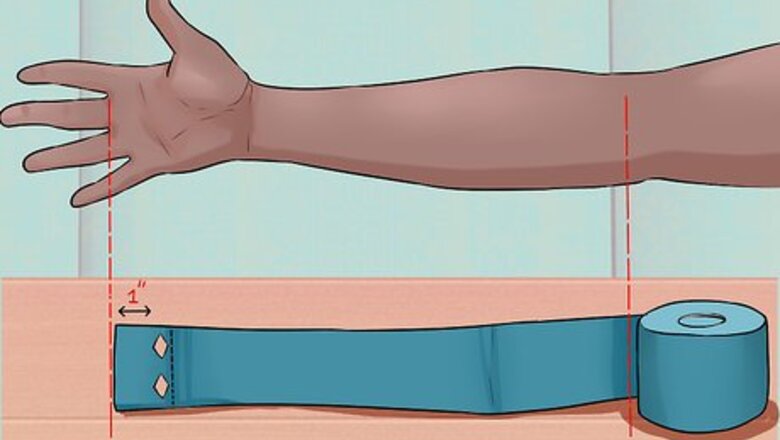
views
X
Expert Source
Joshua Grahlman, PT, DPT, FAFSPhysical Therapist & Entrepreneur
Expert Interview. 8 September 2020.
The pain, tingling and numbness caused by carpal tunnel syndrome happens because the median nerve, located in your hand and arm, is being pinched at your wrist. The median nerve is located within the carpal tunnel of your wrist, which is where the name comes from.
Wrapping with Kinesiology Tape
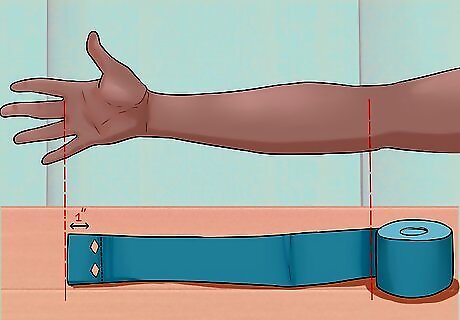
Measure out the first tape piece. Measure the first piece of tape as the length between the middle of your fingers (with your palm facing upwards) to the bend of your elbow. At one end of the piece, fold over a section about 1” long. Use your scissors to cut two small triangles out of the end of the tape, on the fold. This means that when you unfold the 1” piece on the end, there will be two diamond shaped holes in the tape. These two diamond-shaped holes should be right beside each other and maybe 1 centimeter (0.39 in) wide at the middle. The end with the two holes is considered the “anchor” piece.
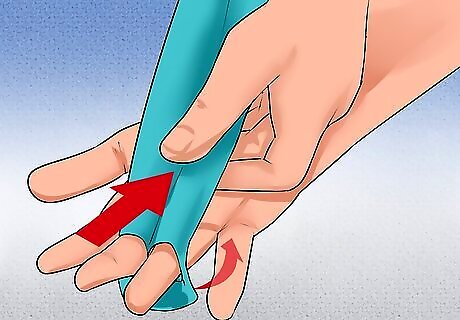
Anchor the tape at your fingers. Take the backing off the tape only at the ‘anchor' end where the two holes are. Holding your arm in front of you with your palm upwards, slide your two middle fingers through the two holes in the tape. Be sure to keep the sticky side of the tape facing towards your palm. Press the anchor end of the tape onto your skin, around your fingers.
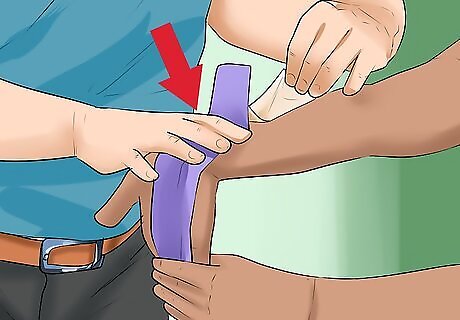
Stick the tape up across your wrist and arm. You will probably need a second person to help you put the tape on your arm, as you’ll need to keep your hand and wrist fully extended while applying the tape. Once your wrist is fully extended, take the backing off the rest of the tape as you stick it to your skin. To fully extend your wrist hold your arm directly out in front of you, palm up. Then use your other hand to pull your hand downwards so your wrist bends. Your hand should be at a 90 degree angle to your arm. Do NOT pull or apply any tension to the tape when applying it to your skin, just take off the back and press it down onto the skin. When you straighten your wrist and hand you should notice the tape has some natural folds or ripples in it at your wrist joint. This is to ensure you still have full motion of your hand and wrist while the tape is on.
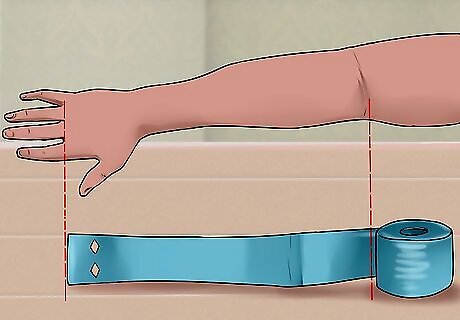
Cut a second piece of tape. The second piece of tape should be exactly the same length as the first piece of tape, including the two holes in the end for your fingers. The same two middle fingers are going to go through the small holes again, but this time the adhesive side is going to go across the back of your hand and arm — so your arm needs to be palm down. As with the first piece of tape, remove the backing from the anchor piece only and slide over your fingers. Press the anchor end of the tape onto your skin, around your fingers.
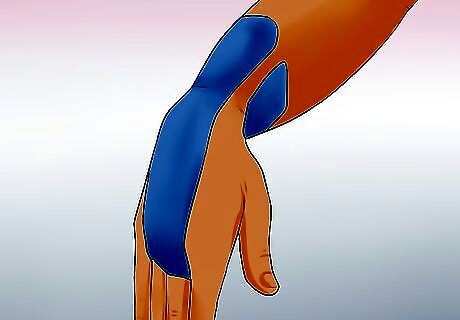
Attach the second piece of tape to your arm. Fully extend your wrist again, but this time you want your palm facing downwards and your hand is going to fold towards the inside of your arm. Slowly remove the backing from the tape as you stick it to the skin while in this position. Do NOT pull or apply any tension to the tape as you attach it to your skin.
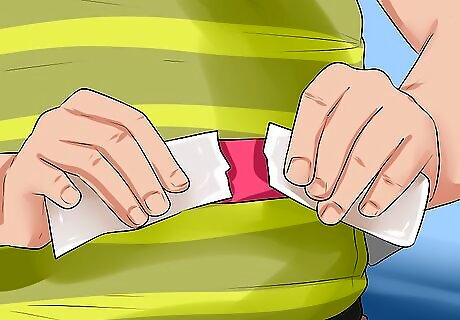
Obtain a third piece of tape. The third piece of tape should be the same length as the first and second piece, except it does not need to have any holes cut in it for your fingers. Instead, once it’s cut to the right length, break the backing of the tape exactly in the middle so you can access the adhesive side.
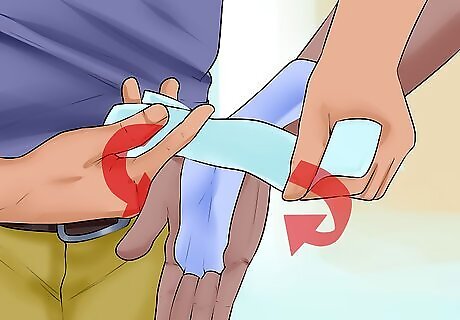
Apply the third piece of tape. Hold your arm out in front of you again, with your palm upwards and fully extend your wrist. Place the middle part of the tape over your inner wrist, right at the bottom of your palm. Because of the width of the tape, it will likely also cover a piece of your palm. Slowly remove the backing from one side and attach it to your arm. Do the same for the second side. Do NOT pull or apply any tension to the tape while taking the backing off and attaching it to the skin on your arm. Because of the angle of your hand, the tape ends may cross over each other on the back of your arm.
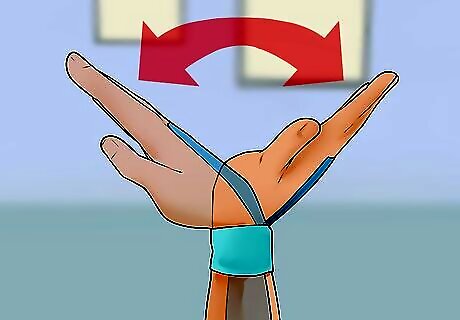
Check that you still have full movement of your hand and wrist. The purpose of the tape is to pull open the carpal tunnel and ease the pressure on your median nerve. The purpose is not to apply any additional pressure (which is why you didn’t apply pressure when attaching the tape to your skin). As such you should still be able to fully move your hand and wrist once the tape is on. If you can’t, you will need to re-do the tape.
Using Rigid Sports Tape
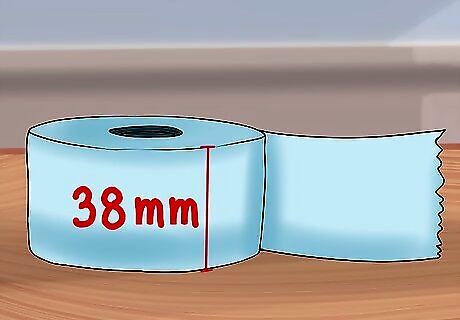
Find the right type of tape. For this type of taping you’ll want to obtain adhesive, non-stretch (rigid) sports tape that is about 38mm wide. When this type of tape is used, it is suggested that a hypoallergenic underlay tape also be used. This underlay tape helps to prevent skin irritation from the sports tape. In order to avoid pain later, you may want to consider having the hair off your wrist area and the back of your hand. Do this at least 12 hours before you apply the tape. The reason rigid tape is being used is to prevent movement of the wrist while the tape is on. Wash and dry your hand and wrist before you apply the tape.
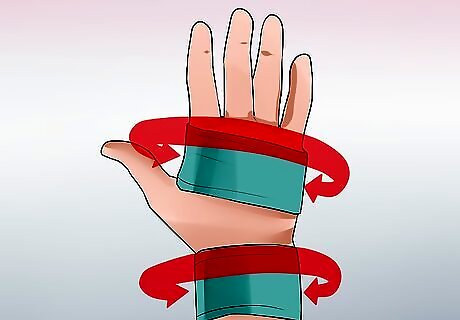
Apply the anchor pieces of tape. The first piece of tape needs to go all the way around your wrist, like a bracelet. The second piece of tape should go around the palm and back of your hand, just above your thumb. Apply well, but not very tight. You do not want to cut off any circulation with these tape pieces. Simply estimate the length of tape required for each anchor section, as it’s okay if the ends overlap each other.
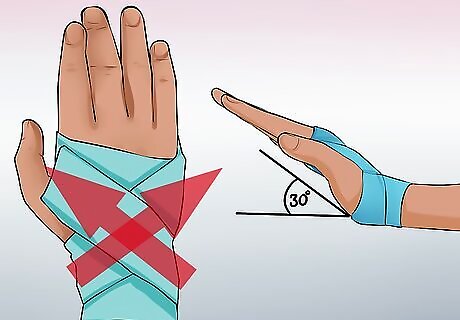
Put the ‘dorsal crosses’ of tape on your wrist. First, position your wrist in a neutral position. Then place two pieces of tape across your hand and wrist such that the final result looks like an X on the back of your hand. One piece should run from the general area of your thumb down to the outside portion of your wrist. The second piece should go from just below your pinky finger to the inside portion of your wrist. To put your wrist in a neutral position hold your hand straight out from your arm and then tilt it about 30 degrees upwards (as your palm is facing down).
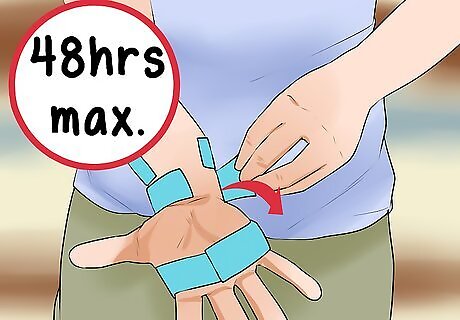
Remove the tape after a maximum of 48 hours. Don’t leave the rigid tape on your hand and wrist for longer than 48 hours, but definitely remove it earlier if it is cutting off circulation or if it is causing you pain. You can use blunt-nosed tape scissors to help cut off the pieces of tape, or you can pull it off from the ends. Pull the tape off in the opposite direction of how it was put on. It may also help to pull your skin slightly in the opposite direction of where the tape is being pulled.
Exploring Alternative Treatments
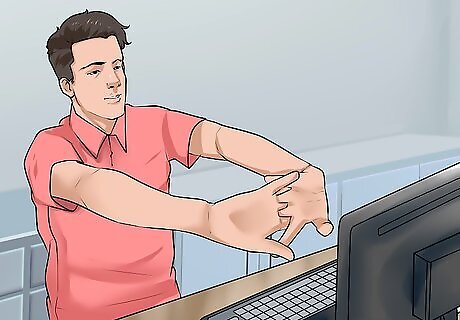
Schedule regular breaks. While there is no direct evidence that carpal tunnel syndrome is caused by using your keyboard and mouse, those objects will certainly cause your wrist to become more painful if you already have carpal tunnel syndrome. Therefore, if you do work on a keyboard or mouse, or you work with other type of equipment that affects your wrist, take frequent breaks. Taking regular breaks can be used in conjunction with many other treatment options. While taking a break consider rotating your wrists and stretching your palms and finger to help keep the area flexible and loose. When typing on a keyboard try to keep your wrists straight, and avoid bending your hands upwards from your wrist to type.
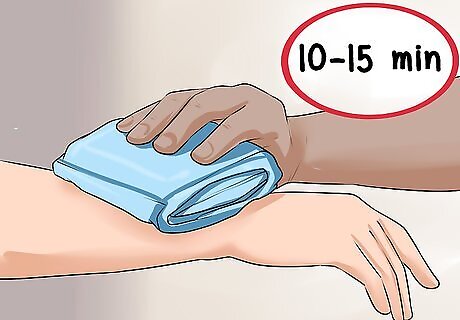
Use cold or ice packs. Cold, in general, helps to reduce inflammation. Putting a cold pack or ice pack on your wrist may help to relieve the pain of your carpal tunnel syndrome temporarily. Put cold packs on for 10-15 minute periods, and avoid putting those items directly onto your skin. Wrap the packs in a towel first. Alternatively, work to keep your hands warm as often as possible. Working in a cold room can often cause more pain and stiffness to develop. Consider wearing fingerless gloves while you work on a keyboard.
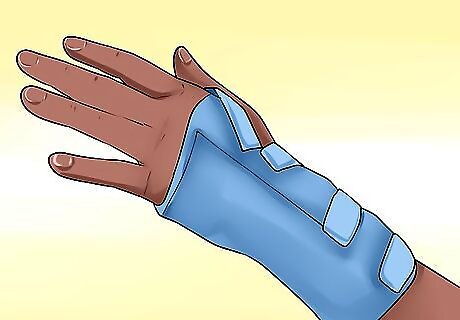
Wear a splint on your wrist. Carpal tunnel syndrome can actually be made worse by how you sleep. Most people sleep with their wrists flexed in some way, which will aggravate any wrist problems they have. Wearing a splint while you sleep is one option to help relieve pressure on the median nerve while you’re asleep. Splints are designed to hold your wrists in their proper and straight positions. Also try to avoid sleeping on your hands at night, as this added pressure may add to the pain in your wrists and hands.
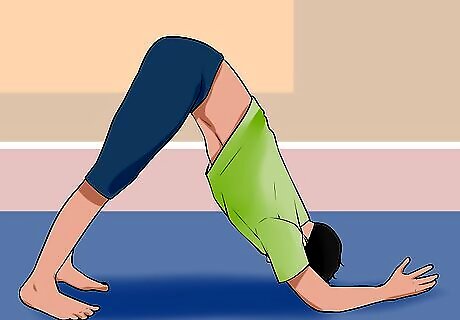
Do yoga. Yoga has actually been proven to reduce wrist pain and improve grip strength in people who suffer from carpal tunnel syndrome. Yoga poses that focus on strengthening, stretching and balancing the joints in your upper body are the most useful.
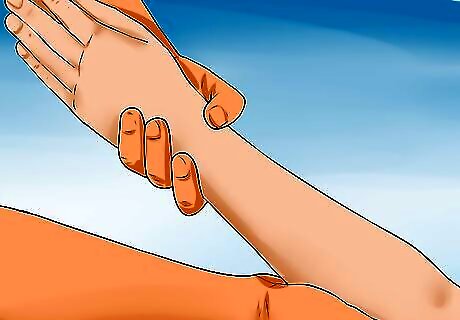
Try massage therapy. Massage therapy provided by a registered therapist may help relieve any pain associated with muscle dysfunction. Massage is effective in increasing blood flow and removing fluid build up in the wrist and surrounding muscles. Start with a 30 minute massage. Please note that you may require three to five treatments to see any benefits.
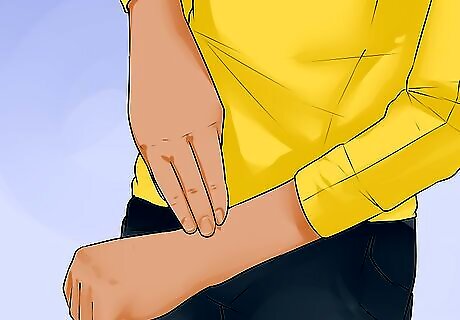
Treat trigger points. In some cases, carpal tunnel symptoms can be referred from trigger points, or more commonly known as muscle knots. These knots can appear in the wrist area, the forearm, and even the neck and shoulders. You can apply pressure yourself, looking for tender spots that recreate the carpal tunnel symptoms. Applying pressure for 30 seconds will lead to a gradual reduction in pain and discomfort. It's important to find as many tender spots as you can and address them. Perform this once a day until the pain subsides.
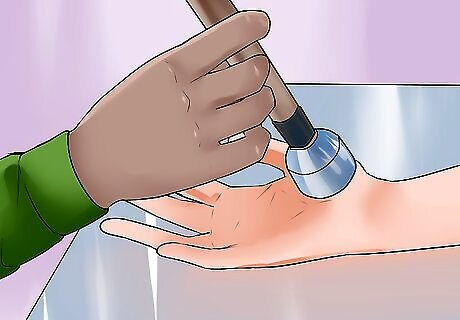
Consider ultrasound or hand therapy. Physical and occupational therapy, performed with the assistance of a physical or occupational therapist, could potentially help relieve pressure on the median nerve and reduce the amount of pain you experience. Ultrasound therapy can also be used to raise the temperature in the carpal tunnel area, which in turn helps reduce the pain. Both types of therapy would need to be done over several weeks, at the very least, before improvements would be noticed.

Take non-steroidal anti-inflammatory drugs (NSAIDs). NSAIDs include drugs like ibuprofen (e.g. Advil, Motrin IB, etc.) and may work to temporarily reduce the pain caused by carpal tunnel syndrome. NSAIDs are available over-the-counter at all drug stores and the generic versions are inexpensive. Be sure to check with your doctor before taking any new medications.
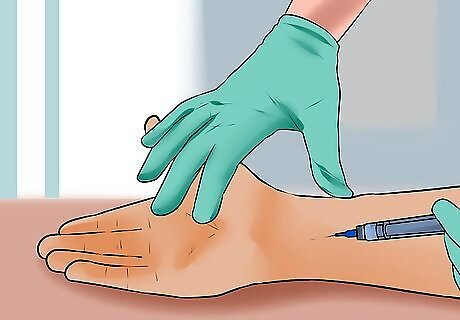
Ask your doctor about corticosteroids. Corticosteroids are drugs that can be injected directly into your wrist by your doctor. Corticosteroids are known to decrease inflammation and swelling, which may in turn release the pressure on the median nerve and make your wrist feel less painful. While corticosteroids come in oral (pill) versions, they are not as effective for carpal tunnel syndrome as the injected versions.
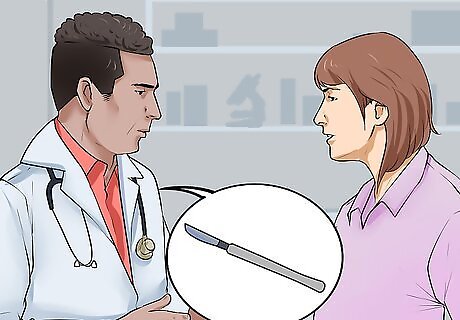
Speak to your doctor about surgery. For people who have severe and chronic carpal tunnel syndrome one potential option may be to consider surgery. Surgery can allow doctors to ease the pressure on your median nerve by cutting the ligament that runs along side it. Doctors can perform two types of surgery: endoscopic surgery and open surgery. Endoscopic surgery is where your doctor will use a tiny camera that can be put inside your wrist, and then tiny little surgical tools to cut your ligament. Endoscopic surgery is not as evasive as open surgery, and is easier to recover from. Plus it doesn’t leave noticeable scars. Open surgery is where your doctor will make an incision in your wrist and palm so the carpal tunnel and median nerve can be seen. One your wrist and palm is cut open, the doctor can cut the ligament to relieve pressure on the nerve. Because of the larger incision, it can take a longer time to recover and there will be a scar. Other surgical side effects are: an incomplete release of the nerve from the ligament, which means the pain will not be completely relieved; infections in the wound; scars; and nerve damage. Make sure you discuss all possible side effects with your doctor before making your decision about surgery.

















Comments
0 comment